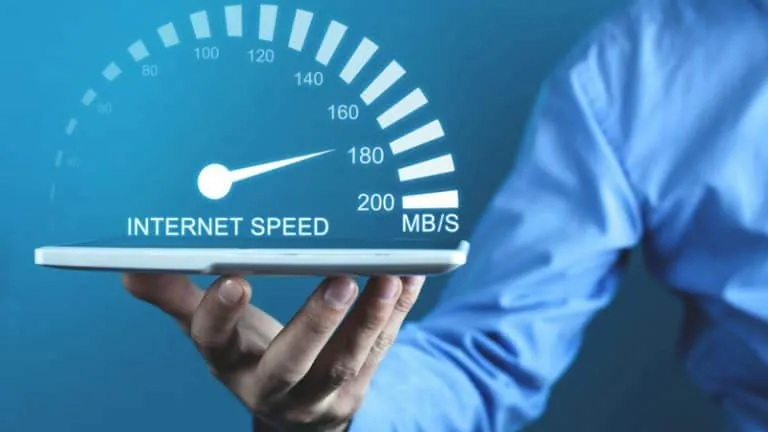
Latency, in the context of computer networking, refers to the amount of time it takes for a packet of data to be transmitted from its source to its destination. This delay can be measured in terms of round-trip time (RTT), which includes the time it takes for the packet to be sent, received, and acknowledged.
There are several factors that can contribute to latency in a network, including:
- Distance: The farther data has to travel, the longer it takes to reach its destination. This is why latency is often higher for networks that span long distances, such as transatlantic connections.
- network congestion: When a network is congested, it can take longer for data to be transmitted because the network is busy processing a high volume of traffic.
- Network hardware: The performance of network hardware, such as routers and switches, can impact latency. For example, a slow router can cause data to be transmitted more slowly.
- Network protocols: The efficiency of network protocols, such as TCP/IP, can also impact latency. Some protocols are designed to optimize latency, while others may introduce additional delays.
- Application protocols: Certain application protocols, such as those used for video streaming or online gaming, can introduce additional latency as they require more time to process data.
- Server response time: The time it takes for a server to respond to a request can also contribute to latency. This can be affected by factors such as server load, server location, and network conditions.
Latency can have a significant impact on the performance of applications and services that rely on real-time communication, such as video conferencing, voice over IP (VoIP), and online gaming. High latency can cause delays in communication, which can lead to poor call quality, delayed responses, and a poor user experience.
There are several techniques that can be used to minimize latency in computer networks, including:
- Caching: Caching involves storing frequently accessed data in a location that is closer to the user, reducing the distance data has to travel and reducing latency.
- content ⇪ networks× (CDNs): CDNs use a distributed network of servers to deliver content, reducing the distance data has to travel and reducing latency.
- Quality of Service (QoS): QoS is a technique that allows network administrators to prioritize certain types of traffic, such as real-time applications, to ensure that they receive sufficient bandwidth and low latency.
- WAN optimization: WAN optimization techniques, such as compression and deduplication, can reduce the amount of data that needs to be transmitted, reducing latency.
- Network function virtualization (NFV): NFV allows network administrators to virtualize network functions, such as routers and firewalls, reducing the distance data has to travel and reducing latency.
Effects
Latency can have a significant impact on various applications that require real-time communication, such as online gaming, streaming videos, and voice and video conferencing. Here are some ways in which latency can affect these applications:
- Online Gaming: Latency can cause delays in the transmission of data, which can lead to a poor gaming experience. Gamers may experience lag, rubber-banding, or long load times, which can be frustrating and can negatively impact their performance in the game. In multiplayer games, high latency can cause delays in the transmission of player movements, leading to out-of-sync gameplay and an unfair advantage for players with lower latency.
- Streaming Videos: Latency can cause buffering, stuttering, or delays in video playback, leading to a poor viewing experience. Viewers may have to wait for the video to buffer or may experience choppy playback, which can be frustrating, especially during crucial moments in a movie or TV show.
- Voice and Video Conferencing: Latency can cause delays in audio and video transmission, leading to poor call quality and misunderstandings. Participants may experience echoes, delays, or dropped calls, which can make communication difficult and unreliable.
- Virtual reality and augmented reality: Latency can cause delays in the transmission of data, which can lead to motion sickness, lag, or poor performance in VR and AR applications. High latency can ruin the immersive experience and make it difficult for users to interact with virtual objects in real-time.
- Online Trading: Latency can cause delays in the transmission of market data, leading to missed opportunities or poor decision-making. traders rely on real-time data to make split-second decisions, and high latency can cause them to miss out on profitable trades or incur losses.
- Online education: Latency can cause delays in video and audio transmission, leading to a poor learning experience. Students may experience buffering, stuttering, or delays in video playback, which can disrupt the learning process and make it difficult to follow along with the instructor.
- Virtual Private Networks (VPNs): Latency can cause delays in data transmission, leading to poor performance and slow speeds. VPN users may experience long connection times, dropped connections, or slow data transfer rates, which can be frustrating and affect their productivity.
- Cloud Gaming: Latency can cause delays in gameplay, leading to a poor gaming experience. Cloud gaming relies on real-time data transmission, and high latency can cause lag, stuttering, or poor graphics quality.
- Online advertising: Latency can cause delays in ad loading and rendering, leading to a poor user experience. Advertisers may experience lower click-through rates, lower conversion rates, and decreased revenue due to high latency.
- Real-time Analytics: Latency can cause delays in data processing and analysis, leading to poor decision-making. Real-time analytics relies on timely data processing, and high latency can cause delays in insights, which can affect business operations and decision-making.
Latency can have a significant impact on various applications that require real-time communication. High latency can cause delays, buffering, stuttering, and poor performance, leading to a poor user experience. Therefore, it's essential to minimize latency in these applications to ensure a seamless and enjoyable experience for users.